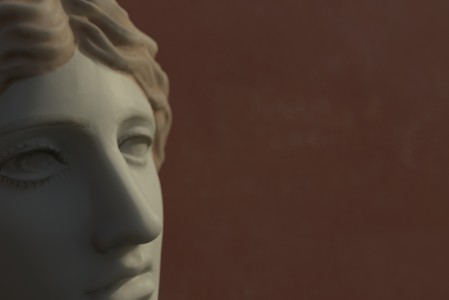Digital Transformations 2012
The Digital Transformations Moot 2012 takes place on the 19th November in London and is a large scale day-long event for all with an interest in the new AHRC theme ‘Digital Transformations’. The theme aims to support the potential of digital technologies for transforming research in the humanities and the arts.
Throughout the day, the members of the sotonDH team will be showcasing our work in the Hack Space. Gareth Beale and I (Nicole Beale) are going to be demonstrating highlight RTI with Hembo Pagi, and Ben Mawson with Iyad Assaf will be showing the music you can walk inside project.
Javier Pereda will be with us on the Web Science stall, showing his fantastic tangible user interface for museums collections, which incorporates gaming and education to teach users about cultural heritage artefacts.
James Miles will be represented by us, and we have some of his work to show, as well as work from Terhi Nurmikko and Tom Brughmans.
You can follow the whole event at the Crowdvine site, where I believe content will be live streamed throughout the day.
http://www.digitrans.crowdvine.com/
The Moot is using the Twitter hashtag: #digitrans so check that out if you’re a Twitter user.
Team members represented at Digital Transformations Moot 2012
Tom Brughmans
Network analysis and visualisation techniques are particularly useful when dealing with big datasets or tackling research questions involving interactions. For example, citation and co-authorship network analysis can be used to explore academic influence and communities of academic practice. Many networks are also spatially embedded and geographical interactions can be explored through network analysis and GIS software (e.g. networks of inter-visibility). Dynamic processes like the trade or transportation of goods or the spread of an innovation can also be explored using network modelling. User-friendly free software is available to explore all these types of networks, e.g. Pajek, Gephi, Cytoscape, Qgis, Netlogo.
If you are interested in how network analysis and visualisation can be used for Humanities research and want to know more, get in touch with Tom (t.brughmans@soton.ac.uk).
A link to Tom’s profile
Tom’s images
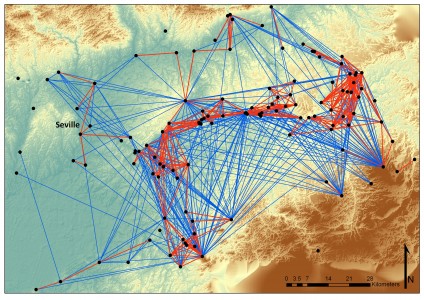
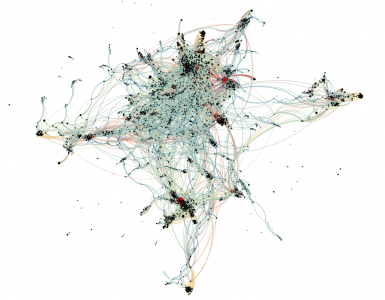
Terhi Nurmikko
My research examines the philological, orthographical and palaeographical challenges presented by Assyriological data and by cuneiform inscriptions from the Ur III period (c. 2000BC) in particular, and on how these may be addressed using semantic technologies and Linked Data. My main interests lie within the juxtaposition of the physical medium of a cuneiform tablet, its metadata and visual representation using innovative technologies such as RTI, with representations of the textual content using narrative ontologies.
A link to Terhi’s profile
Terhi’s images
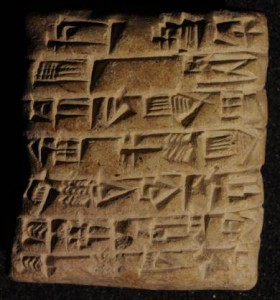
Ben Mawson
Composer Ben Mawson is developing the world’s first city-wide locative music project, an ‘Audio Portrait of Southampton’ in partnership with Southampton Music Services, school groups and college music students from around the city.
Comprised of hundreds of hours of speech, song, ambient recordings and instrumental and electronic music spread across the city in an invisible layer, you will be able to explore its sonic threads and clusters with an Android phone and special software called noTours, designed for editing a place with sounds.
He has recently presented his work to Cap Gemini, the Landscape Institute and Google Maps and gives lecture presentations and live demonstrations of music spread across a landscape. To hear his latest project, a new version of his choral composition Take Me By The Hand, transplanted to St Pauls Churchyard and overlaid with processed recordings of people and the place, sign up for a live demonstration with Ben as your guide.
His current work on locative music – music fixed to a particular location – is an extension of long term fascination with the expressive potential of found sound objects and uses of space within a musical performance.
His hybrid, elusive musical language is characterised by opposing or contrasted forces – drawing from the formal symmetries of the Baroque to the wildness of central Asian folk improvisation, from jazz and blues to musique concrète and plainchant.
Ben has been a music scholar, nightclub pianist and busker and returned to academia after 15 years of working as a freelance composer and running a small business.
He is now completing a PhD under the supervision of composer Michael Finnissy and working on a virtual performance platform called 3DBARE, for Music You Can Walk Inside.
A link to Ben’s profile
Ben’s images

Ben’s audio
Ben’s audio can be heard here: http://soundcloud.com/benjamin_mawson/blmawson-credo-part1-binaural
James Miles
Winchester – The employment and use of terrestrial laser scanning to record the current form of the cathedral and its surrounding buildings. The cathedral and its precincts are under constant change, both in terms of restoration and in terms of subsidence from the local geology of the site. The use of laser scanning to record these wonderful buildings enable a virtual record of their current form and will be used as a basis to test their structural capabilities under the current subsidence that is taking place. Also used within this work in the use of photogrammetry (A three dimensional virtual model based on two dimensional images), geophysical surveying to highlight the location and outline of past monastic buildings, such as the chapter house and the original 12th century cloister and computed tomography scans to test the structural elements of individual architectural components
Portus – Same thing as above for the scanning. Gigapan – To produce a serious of high resolution images that enable virtual access and a virtual record of the site for public dissemination. The images produce provide a unique insight into the current work that is taking place and can be used as a basis for further exploration of the site.
CT scan -Computed tomography enables non-destructive three-dimensional densitometric information of the internal structure and external geometry of many archaeological artefacts. The method was recently used on the Roman Selby area hoard which accurately recorded the surface and sub-surface data of the intact coin hoard. It allowed for an examination of coin placement, coin identification and segmentation and extraction of individual coins.
Laser scan data – The recording of artefacts as they currently are, are an important part within public dissemination and for creating an accurate record. Triangulation laser scanning provides through a simple technique of recording artefacts at millimetre resolution, enabling artefacts that are fragile or in storage to be shown online or within museum displays.
Structural analysis – Examination of material remains of previous human societies help study past human behaviour in archaeology. Some of the most important remains are the ruins of historic buildings. The use of computerized recording equipment and three-dimensional drawing are essential tools for researchers to recreate a ruined structure for reconstruction and further analysis. However, the reliability of the precision of the reconstructed model can be controversial due to the absence of sufficient historical information and fabric loss. Structural analysis has proved to be an alternative or confirming tool for reconstruction in addition to site survey and historical investigation. On the basis of the stability of the ruined structures possible hypothetical forms can structurally be analysed under the associated loads and the resulting behaviour can be assessed to determine its actual form.
A link to James’ profile
James’ images


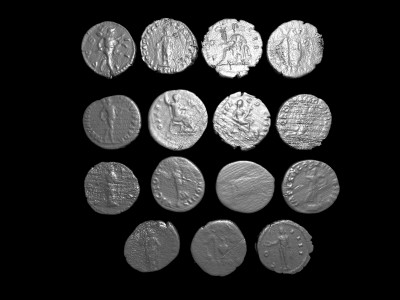
Javier Pereda
Javier Pereda is a Graphic Designer from Mexico City he has a Postgraduate in Marketing (Creative Visualisation) and a Master in Multimedia Production. He has recently finished his MSc in Web Science with the University of Southampton. After performing several roles in the Media industry, including several director roles with several transnational companies, Javier moved into the academia where he just started his PhD in Web Science.
Other areas that Javier works on include Media Studies, Marketing, TV Postproduciton, 3D Design, Human Computer Interaction, Tangible User Interfaces and Museum Studies.
Web Based Tangible User Interfaces for Constructivist Museums Project:
This project explores the use of downloadable Tangible User Interfaces (TUI) to explore online museum content. Following constructivist learning theory, the user is presented with the opportunity build an appropriate their exploratory tools, thus promoting engagement with knowledge. TUIs have been proven to be beneficial to offloading mental processes, especially when working with children. By offloading these mental processes, the ‘visitor’ can be motivated to focus on the information instead of focusing on the use of an interface.
The interface itself introduces users to deities from different cultures throughout history, and encourages the comparison of those cultures though engagement with representative objects; the gods. The system behind the three versions of the interface will test how far they allow the user to relate different concepts through physical objects. Through human computer interaction (HCI) and TUIs this system proposes a navigational system and concept relation approach that can change how users explore online museum content. Furthermore, by utilising tangible objects, this research aims to provide the methodological approach to build a dependable exploration system for distance learning through online museums.
This project presents TUI implementation, Museum Studies and Distance Learning blended into an interdisciplinary research project. Nevertheless, the project still presents big challenges in other disciplines such as Marketing, Industrial Design and Didactic Design.
A link to Javier’s profile
Javier’s images
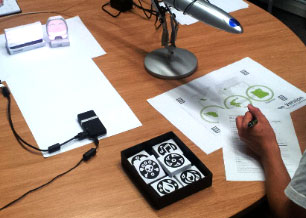
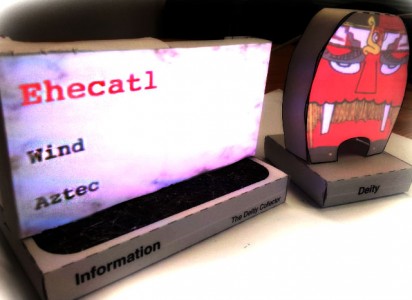
Ramine Tinati
Ramine is a Web Science Doctoral Training Centre student. His work focusses on Open Government and the impact of the web on this phenomenon. As part of his research Ramine has been looking at ways to help identify different user roles within topical Twitter conversations, helping interested parties to who may be the users to follow (or target!). The model Ramine uses is based upon filtering users based on the dynamic network retweet network structure that occurs as conversations occur between users (bound by a specific hashtag). Examining the timeline of these tweets the model can be applied and different user roles start to become identifiable.
We will be showing examples of this very useful tool and methodology at the Moot.
A link to Ramine’s profile
Ramine’s images

Gareth Beale
Gareth will be talking about how we can use technologies and collaborative relationships to allow people to better engage with research and the data that emerge from the research process. His work includes the use of photography, 3D printing, 3D computer graphics and graphic design.
A link to Gareth’s profile
Gareth’s images
